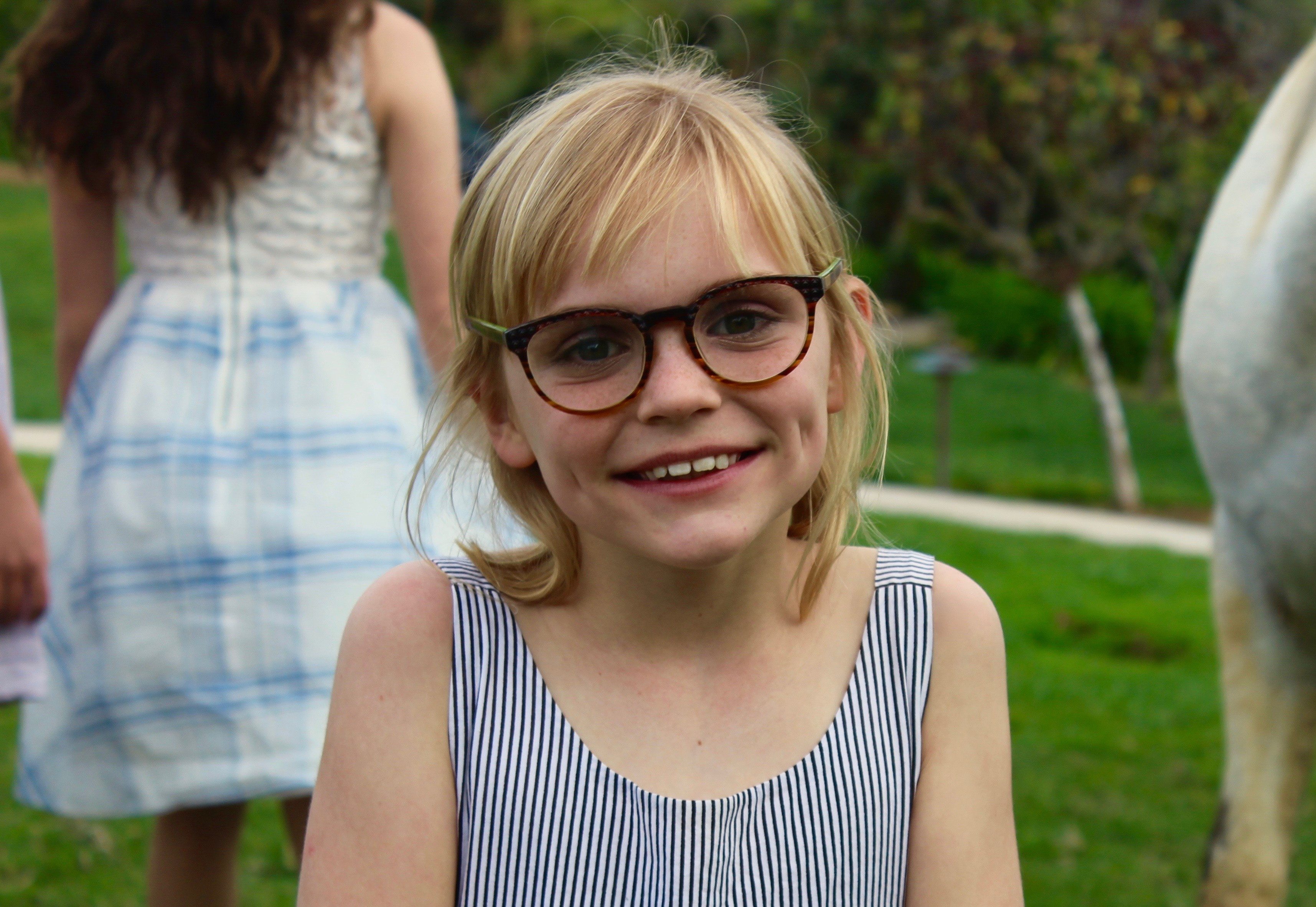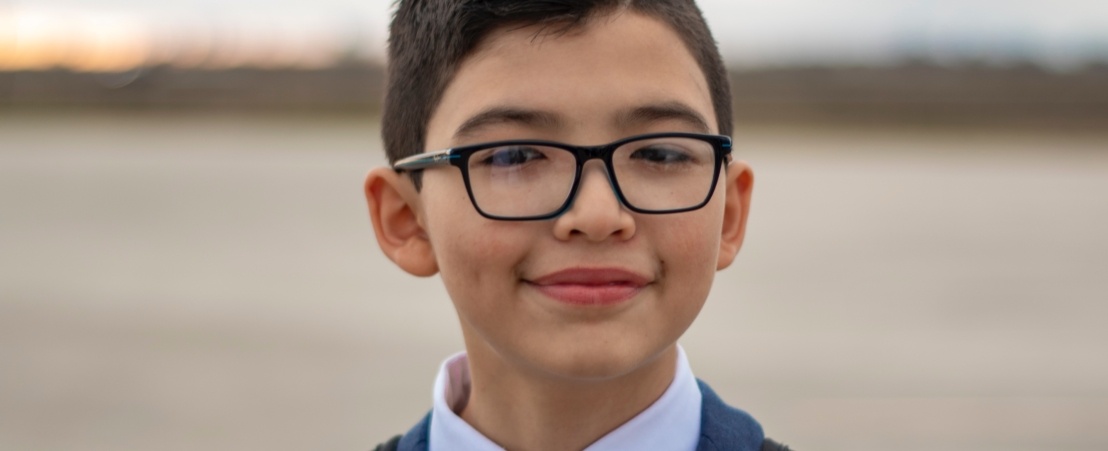
Many times, children are not aware of their vision problems and how they may be affecting their school performance. Therefore, it is important to perform annual eye exams to detect these visual anomalies in time and solve them. This is especially important if the child has headaches, disinterest, confuses letters, uses the finger to follow the lines when reading or winks regularly.
If after an exam, some type of refractive problem is detected, eyeglasses will be prescribed. This can sometimes create confusion and doubts to parents about what are the best glasses for their children, what characteristics they should have, how the frame should be or what type of lenses are the most appropriate. In order to solve some of these questions, our Optometry Department details below 5 tips to consider when choosing glasses for children.
The frame must adapt to the child’s face and perfectly cover their field of vision. The glasses cannot be wider than the face nor should they exceed the eyebrows, so it is not advisable to buy larger glasses thinking that may serve longer. It should also be borne in mind that the central part of the lenses should be adjusted to the centre of the pupil.

The choice of material will depend, in large part, on the child’s age. Thus, for infants or children under 5 or 6 years of age, silicone frames are more recommended, as they are lighter and stronger, so they can better withstand torsions and breaks. From 6 years old, materials such as acetate can be used, which are resistant in addition to better concealing the thickness of the lens. Another option is metal or titanium glasses, which are lightweight and hypoallergenic.
The bridge of the glasses, that is, the arch between the two lenses, must rest properly on the nose. At that age, children still do not have a well-defined nasal bridge, so some glasses could slip down their face and/or sit too low on their nose, which would cause them to end up looking over the lenses. Thus, it is advisable to opt for glasses with full bridge, low bridge or, in the case of babies, with inverted bridge.

For the glasses to be comfortable for children, the temples must be adjustable, flexible, have the appropriate length to their anatomy and, if possible, have soft tips. This will prevent them from pressing their temples or leaving marks on them. Also, to prevent them from falling out when playing or practicing sports, it is recommended that they have a strap or that they use “temple stoppers”, a pair of accessories that help keep the temples in a fixed position behind the ears.
It is important that the lenses are made of organic material, preferably polycarbonate, since it is more resistant to breakage than the rest. It is also essential that they include anti-scratch treatments, which provide greater resistance to scratches, and anti-reflective coating, so that they eliminate reflections.

All children should have an ophthalmologic exam during childhood. When they are young, they are not able to say whether they see well or not, and this exam can detect correctable refractive defects that could negatively affect the child’s visual development and help prevent school difficulties that may result from lack of optical correction. Some problems, such as strabismus or amblyopia (lazy eye), can be treated in infants and young children, but they are irreversible once they have grown. Therefore, if you suspect that your child does not see well or that forces his eyesight when reading, it is important that they have an eye exam that allows to detect or rule out vision problems such as myopia or farsightedness and correct them if necessary with the use of prescription glasses.
Contact us or request an appointment with our medical team.